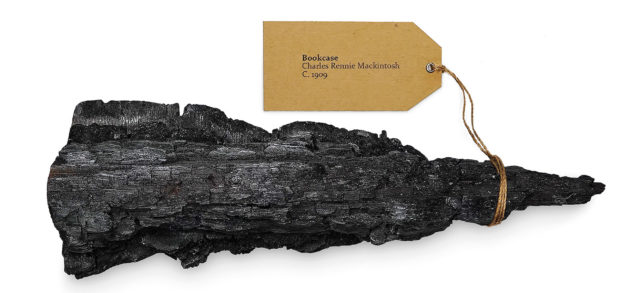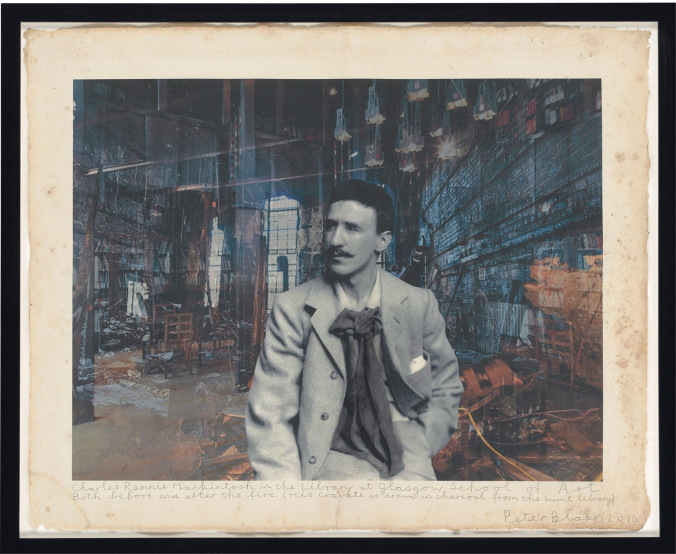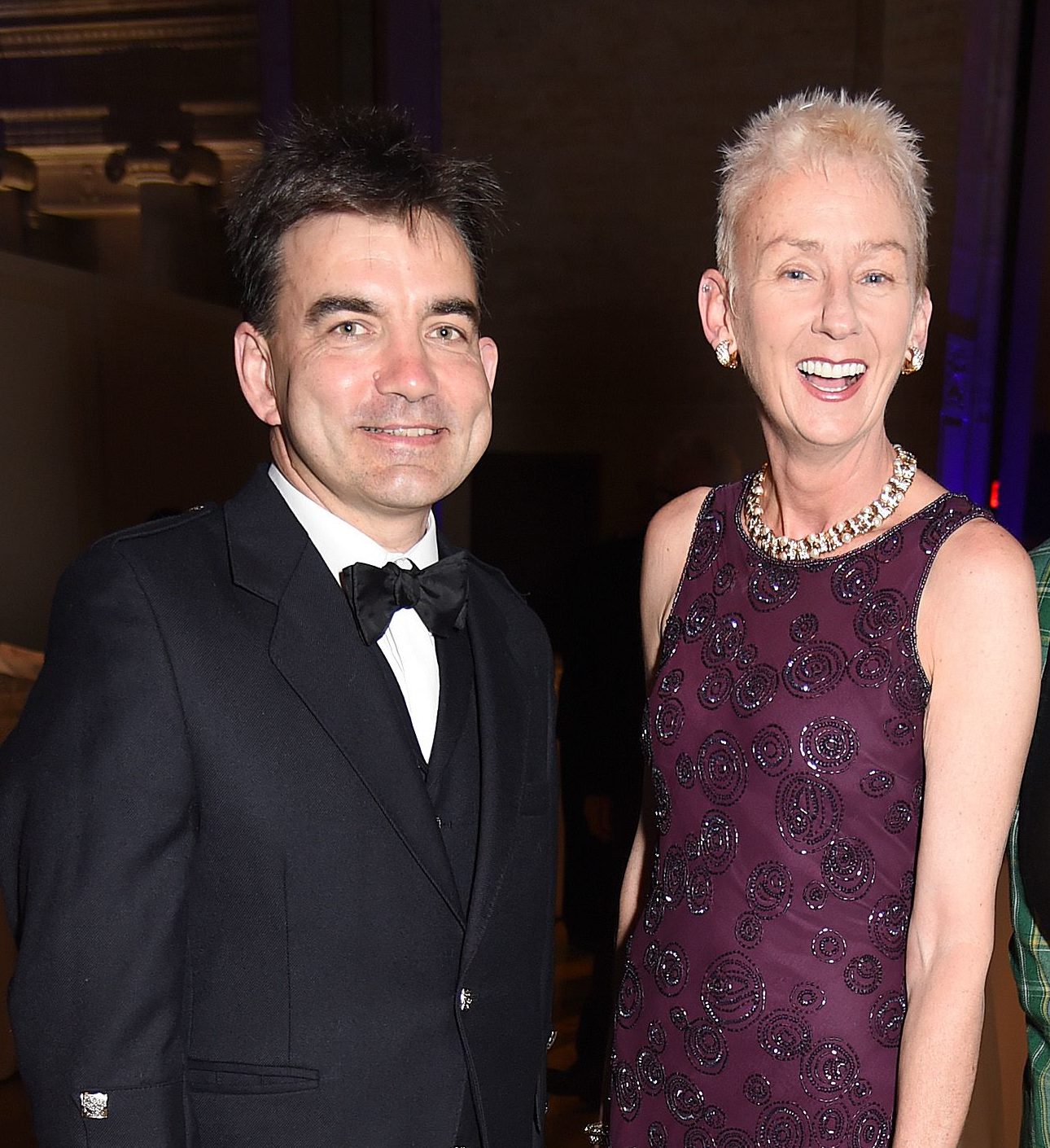
It was, the great and the good of the art world agreed, a splendid idea.
Fragments of the charred debris from the Glasgow School of Art would be carefully labelled, boxed and sent to 25 of the world’s most renowned artists to be used to create new works to be sold to help fund the restoration programme at the school ravaged by fire in 2014.
The idea for Ash to Art came from J Walter Thompson, one of the world’s biggest and best-known ad agencies. Its purpose, the chosen artists, including seven Turner Prize winners, seemed to believe, was simple: to rebuild the art school’s famous Mackintosh building.
At the time, Grayson Perry, the Turner Prize-winning potter, said: “It’s a tragedy. It’s the most famous art school building in Britain. It’s also the masterpiece of Mackintosh. It’s a double tragedy.”
Bill Hartley and Giles Hepworth, the JWT ad men, who came up with the idea, said: “It seemed appropriate to use a by-product of the school’s fire as the tool for its rebirth.”
On March 8, 2017, the world-renowned auction house, Christie’s, forgoing their usual commission to support the appeal, sold the works created by acclaimed artists, including Douglas Gordon, Alison Watt and Peter Blake, for a total of £706,438.
As the auctioneer exhorted would-be buyers – “Are we going to get this building rebuilt or not!” – a female nude by Jenny Saville drawn with charcoal from the library attracted the fiercest bidding, eventually selling for £296,000.
The auction made headlines around the world.
The Financial Times reported how the auction helped raise the millions “still needed to restore Glasgow School of Art Mackintosh building”.
The Canadian Broadcasting Corporation reported how the school asked “artists to help resurrect its library”.
It was an ingenious, creative and award-winning fundraising campaign. But now, critics and informed observers are asking did a single pound go to repair the fire-damaged building or was every penny used to fund the expansion of the art school campus, refurbish parts of the Mackintosh building untouched by flames and smoke, and drive forward the school’s expansionist ambitions?
Were the hundreds of thousands of pounds raised at the auction – and the millions already donated to repair the fire-stricken building – spent on underpinning the school’s ambitions to become “a global leader in studio-based learning and research” and increase the number of students, many from overseas paying up to £20,000 a year for the privilege of studying at such an iconic institution?
As far as I was concerned, we were raising money to rebuild the school. The money that was raised in good faith was, as far as I know, put into the rebuild fund
— Nick Hough, formerly of Christies’ auctioneers
Nick Hough, who was chief operating officer for Europe, the Middle East, Russia and India at Christie’s at the time of the auction, certainly thought the Ash to Art proceeds would be spent rebuilding the famous Mackintosh building.
He said: “J Walter Thompson had the original idea to hold an auction. They organised everything except the auction. They made the arrangements with the artists, got the pieces of work signed and we simply put them in a sale, sold the works and returned the money to the fund.
“We had very little contact directly with Glasgow School of Art. That relationship was managed through J Walter Thompson.
“As far as I was concerned, we were raising money to rebuild the school. The money that was raised in good faith was, as far as I know, put into the rebuild fund.”
Advertising executive Giles Hepworth, who helped create Ash to Art, said: “We just wanted to help out as much we could. I am not aware of where the money is going or what has been spent. I’m afraid that’s something I can’t comment on.”
While fundraising efforts were grabbing headlines around the world, back in Glasgow there was discontent among staff at the school of art’s board.
A former senior member of staff said: “While people on the ground at GSA rallied round to keep core teaching and research on track, the bosses were, for example, arranging an expenses-paid trip to Venice to talk about the future of The Mack.”
A black-tie gala dinner at exclusive New York restaurant Cipriani was held at the US launch of the £32m Mackintosh Campus Appeal in June 2016. A table of 10 cost £3,500, with the money going, according to the invitation, to “helping the GSA recover from the almost catastrophic fire in its iconic and beautiful Mackintosh building”.
GSA director Tom Inns, board chair Muriel Gray and Alan Horn, director of the GSA Development Trust, were all in New York for the fundraising “evening of cocktails, fine food and wine”.
Mr Inns also travelled to Venice in October 2014 to meet architectural experts to discuss restoring the Mackintosh library. The management of the art school has come under increasing scrutiny since the second fire last year. MSPs and critics have questioned the stewardship of the building during the refurbishment of the Mackintosh building.
Mr Inns, the school director left his position suddenly last year, while Ms Gray, who has insisted management of the restoration programme was exemplary, has temporarily stood down as chair.
Meanwhile, last week, we revealed how 70 staff have left the school since the fire last year with one former staff member saying some former colleagues feel demoralised, intimidated and bullied.
Six signed confidentiality agreements before leaving, with payouts to departing staff totalling £210,000, although that figure is not thought to include Mr Inns who, sources suggest, left with £250,000 after quitting his job, which had a salary and pension package in excess of £180,000 a year.
In March this year the GSA board was criticised by MSPs for failing to do enough to safeguard the building, which also suffered a more devastating second fire in 2018.
Among the experts to give evidence to Holyrood’s culture committee was gallery owner and Mackintosh biographer Roger Billcliffe.
In a written submission to the committee, he said there had been “little or no attempt” to replace lost items despite the fact that £4m of the insurance money was earmarked for “heritage assets lost in the fire”. Last year a Charles Rennie Mackintosh-designed key used to open the school of art sold at auction for £32,000.
A percentage of the sale went to support the Mackintosh Campus Appeal but Mr Billcliffe said yesterday: “I think they should have bought it. I think it would have been, pardon the pun, a key thing to help drive the future development and fundraising. I think that was a mistake. They certainly had the funds.”
Nothing to see here: Art School redacts insurance update report
The public reaction to the second and even more devastating Glasgow School of Art fire has been far more subdued compared to the outpouring of goodwill seen in 2014.
The response of the board and management team has also been sharply different.
A public appeal was launched weeks after the first fire at The Mack but after the second blaze it was made clear that no public money would be needed.
Last September, GSA chairwoman Muriel Gray, who has since stood down temporarily from the board for family reasons, said rebuilding The Mack was “non-negotiable” but it could be done without public money.
She said at the time: “We are resolved that the Mackintosh comes back as a working art school, as a major player, a cultural leader for the city and the Scottish economy. It will be beautiful. It will be as Mackintosh designed it, to the millimetre. We are entirely trusting that this is not going to cost any public money at all.”
However, the board has gone to some lengths to protect the insurance arrangements in place to pay for the rebuild. A meeting of the board of governors on June 3 discussed an update on the “current Mackintosh building insurance” from Alan Horn, director of development. In the board papers posted online, every word on the three pages of minutes relating to this item has been redacted.
The plans are on hold until the cause of the second blaze is established by firefighters. A report into the cause and source of the Glasgow fire, which also devastated the 02 ABC concert venue in Sauchiehall Street, is expected next month.
In the ashes of The Mack, the board saw opportunity
By Gordon Gibb, Director of Professional Studies at the Mackintosh School of Architecture
I, like everyone, mourn the loss of the Mackintosh building. But I mourn the loss of the art school that it symbolises just as much.
Two devastating fires in four years and, crucially, the response to those disasters, have brought management failings and lack of transparency into the sharpest focus.
At the most senior level, on the board and in the directorate, the poor decision-making and inept stewardship of this famous institution demands inquiry.
Even before the first fire, warnings were ignored and in 2014 a student was allowed to proceed with a dangerous installation.
The aftermath of the ensuing fire offered a great opportunity for the board to bring the school together and push forward together.
Instead, a fundraising campaign was launched. In fact, the money was not needed to rebuild the Mackintosh building and so the fund was renamed.
Out of disaster, the board and directors saw only opportunity. After all, the campus still had to expand.
That growth has put staff under strain, however, and student discontent at the lack of time with tutors is clear in the National Student Survey, where Glasgow School of Art features close to the bottom of the rankings in the UK. The class sizes result from a lack of money for teaching staff.
This is in stark contrast to the £500,000 spent on travel and entertainment for executives in the past two-year period and the hundreds of thousands gone on pay-offs bound by confidentiality agreements in the same period.
In the student survey, the main criticism is of the management and highlights a lack of trust and effective communication with staff or students.
Staff representatives were excluded, for example, from board discussions around the director’s departure; a recent initiative to remove all administrative support from the school’s departments was only prevented by union action; morale is at an all-time low and staff retention rates are terrible. A culture of bullying is now discussed by a workforce worried about their institution and their careers.
Following the 2018 fire, the chair and managers gave evidence to a Holyrood committee when their tone was widely perceived as aggressively unapologetic and arrogant. That perception was shared by those living in the streets around the school and the staff who work there.
Never has there been a single expression of humility by the board or the directorate. Instead, they insisted, and continue to insist, their stewardship of the building was faultless.
Today, we have opaque and obfuscating administrators rewarding and defending themselves while traducing anyone with the temerity to offer criticism, constructive or otherwise.
Among the teaching staff the school is full of talented and committed people. We need to change the culture to one of honesty, openness and integrity, and to do this we need the right people in the right posts.
It is not just the Mack that must rise from the ashes but the culture and support for creativity and commitment that once symbolised this great school.
Smoke and mirrors: How Glasgow School of Art diverted Mackintosh fire millions to fund expansion – click here to read more

Enjoy the convenience of having The Sunday Post delivered as a digital ePaper straight to your smartphone, tablet or computer.
Subscribe for only £5.49 a month and enjoy all the benefits of the printed paper as a digital replica.
Subscribe
 © Richard Young/Shutterstock
© Richard Young/Shutterstock 